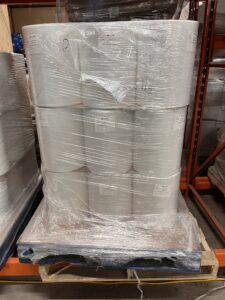When it comes to chopping, bundling, and selling firewood, every seasoned woodworker has their own tried-and-true methods. But across forums from Canada and the U.S., enthusiasts share their experiences, preferences, and even mishaps when it comes to preparing firewood for both personal use and for sale. And believe me, there’s lots to learn.
Going through them can give you a sense of how other people are doing things, give you new ideas, and get your gears going. Let’s take a deeper look at the insights and stories we’ve collected from some real users in the many firewood communities online.
The Chopping Process
Seasoned firewood cutters often have strong preferences when it comes to their chopping tools. The right equipment can save time and effort, particularly when dealing with stubborn logs. On Arboristsite, user “Big_eddy” discusses his approach to chopping:
“I one hand a 2lb axe for kindling, use a Fiskars for most blocks, and 6 and 8lb mauls for giant hard maple rounds. That’s when I’m not using one of the gas splitters. There are smaller electric splitters available too. One thing I’ve never used is a wedge and sledge combo.“
Meanwhile, “telecasterfool” in that same discussion suggests optimizing your chopping by planning ahead:
“I received the council tool 5-pound splitting axe last year – great tool if you want a wood-handled axe. My advice is that you will have to try some things out for your style and wood types. My second piece of advice is, if you know you are hand-splitting, you can make your life easier when you cut the tree into rounds with your chainsaw. I will create as many straight-grained, no-knot pieces as possible. Good luck!”
For those looking for a less labor-intensive method, “belgian” shares his experience switching from an axe to a hydraulic splitter:
“Splitting wood with an axe is hard on your body and also quite dangerous once you get tired. I hurt my foot once quite bad while splitting and have given the axe a nice retirement spot in the attic since then. Got myself a small size 6-ton mobile hydraulic splitter driven by electric motor, and never looked back. The stubborn pieces face the chainsaw,….easypeacy.“
Bundling Firewood
Once chopped, bundling firewood for sale (in firewood bags or wrapped) is the norm for retail-oriented firewood operations. Having a consistent, effective, and EASY method can make bundling a breeze and ensures your wood is packaged neatly for transport or sale.
In another discussion on Arboristsite, user “SimonHS” offers a straightforward solution for processing kindling quickly:
“Bundle the sticks with ratchet straps and then cut the bundle with a chainsaw. Or make a cutting stand.“
And user “turnkey4099” answered explaining to the original poster how he implemented that method:
“That is the method I used. Made square Us out of angle iron with the width inside just under the reach of a 20″ bar, height about 1.5′. Set 2×6’s on edge and fastened the Us spaced 16″ apart (or whatever length you want to cut). Fill with limbwood, then walk down the jig slicing halfway between the angle irons. Once loaded, you wind up with a bunch of cut-to-length sticks. Takes longer to write that than it does to fill and cut a bunch. Mine will fold up for easy storage when not in use. Got to be real careful spacing the Us or it won’t fold.“
For sellers, consistent bundling ensures that their product is reliable and easy for customers to use. This builds trust, and with quality mesh firewood bags, customers will always have wood that’s in excellent condition.
User LXLVideos asked how many logs go into a bundle on the Firewood subreddit, and user “TituspulloXIII” answered simply:
“It will vary based on how big the splits are, but you can expect somewhere around 0.75-1.00 cubic feet of wood in one of those camping bundles.“
Even if many times the amounts are standardized based on the size of the bags you use to store your wood. Our firewood mesh bags, for example, come in a range of sizes:
- 20″x20″
- 20″x24″
- 19″x32″
- 22″x24″
- 24″x24″
- 24″x36″
Pricing Firewood Bundles

Pricing firewood is a delicate art. Too high, and customers may turn elsewhere; too low, and you might not cover your costs. In addition, do you place to wholesale to local businesses (for them to mark up), or sell straight-to-retail at the end of your lane, perhaps?
On Arboristsite, someone was wondering whether they should raise their prices or not. User “unclemosutache” shares his experience working with a local hardware store:
“I sell bundles for $4 to my local hardware store. He resells for $6 or $7. But it takes a lot of hassle off of me that way. Every area is different.”
Another user took a more practical approach. “Cantoo” adds valuable perspective on keeping an eye on your competition:
“You also need to consider what other people are doing in your area. We have a local guy that started selling nice bundles for $10, most in the area are $5. I drive by pretty often on the way to work, he sells a few on Friday but seldom any other time. I assume anyone who drives by regularly knows of cheaper places. I built a firewood stand, built a shrink wrapper and have 5 cords of ash cut, split and dried ready to go, but not sure I want the hassle yet. I think I might put some out this long weekend just to see if I want to bother with it next year.”
Finally, the rise in production costs due to inflation is an important factor that firewood sellers are contending with. On Hearth.com, user “blades” discusses how inflation is affecting the industry:
“Our costs are up, therefore likely will see higher selling prices. The occasional or ambiance burner will cut back. Most will weigh pricing vs. conventional. Pellets are up again; same applies. Personally, my propane pricing is already locked in. Electric rates already jumped. Do not know about NG as I do not have that available.“
Redditor LPromo even provided some free marketing ideas for on /r/firewood:
“We’ve had a bunch of luck with Facebook marketplace. I have 3 ads that run at the same time with the location set at the 3 trailer parks (all within a 15 minute drive to me). We do between CAD$1800-$3000/month just off firewood sales. Bags, bundles and bulk 2’x2.5’ firewood stand.”
Pricing remains a constantly shifting element of selling firewood, and adjusting to market changes, competition, and supply costs is key to staying profitable. Now, even inflation is a concern. Keeping up with forums, and pricing in your area, can give you an idea of what a competitive price is, and some firm grounding.

Key Takeaways?
Reading about other’s experiences and learning from more experienced sellers can help you and your business do better and make more money. Good forums to haunt as a new or experienced firewood seller include:
The firewood community offers lots of knowledge that reflects both the practical and personal experiences of those deeply involved in chopping, bundling, and selling wood. Some emphasize the differences between using traditional tools like axes versus hydraulic splitters and reading those posts could help you better spend your money. And while bundling is a key part of the firewood selling process, the thing people discuss the most is pricing.Pricing firewood requires a keen awareness of local markets, customer expectations, and even inflation. As shared by many users, striking the right balance between covering costs and staying competitive when selling firewood crucial to building a sustainable business. From using innovative bundling techniques to adjusting to economic pressures, here’s another reason to keep up with the community.
In the meantime, check out our firewood bags for sale online – bulk or retail quantities available. We’re a top firewood bag company in Canada, and love working with small business owners like you. Best of luck!




